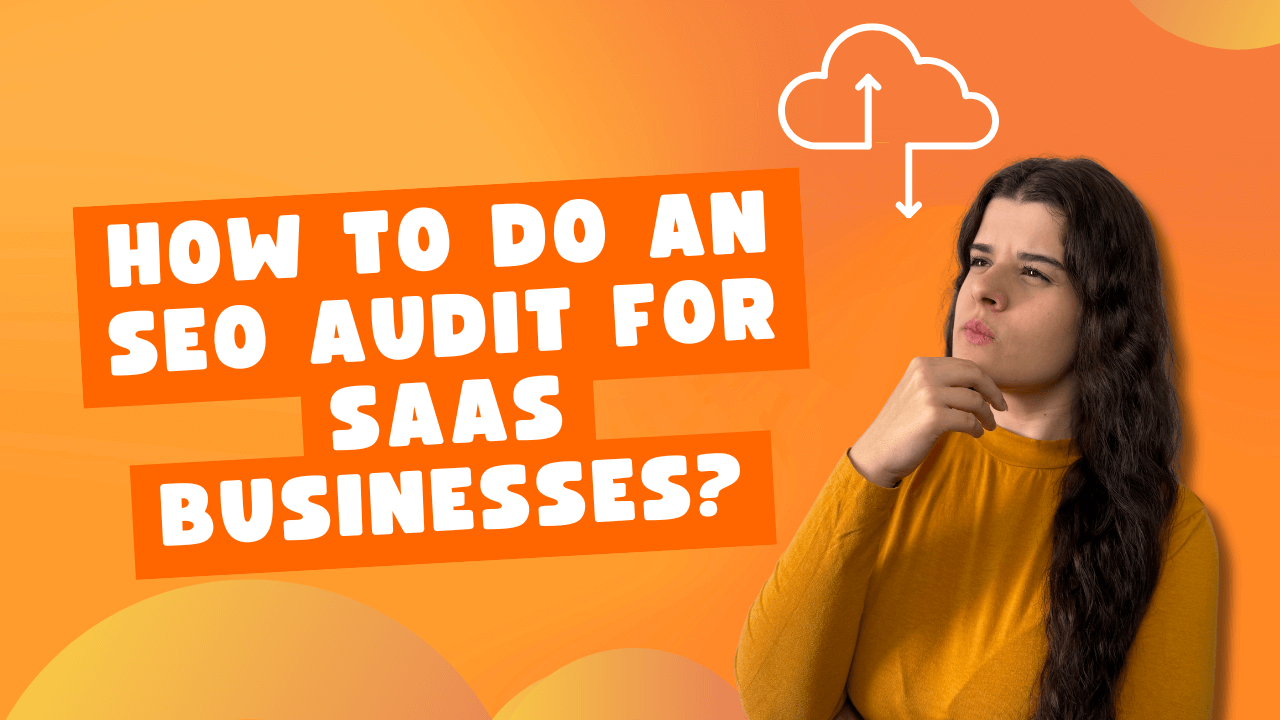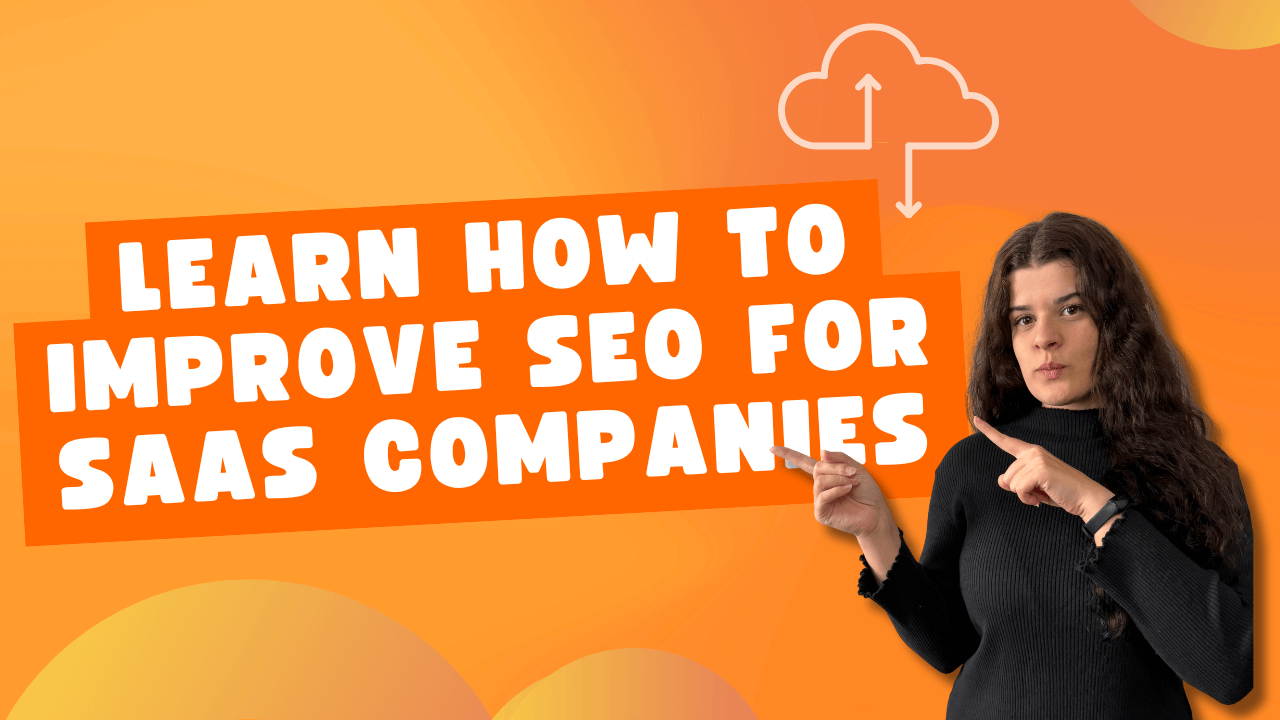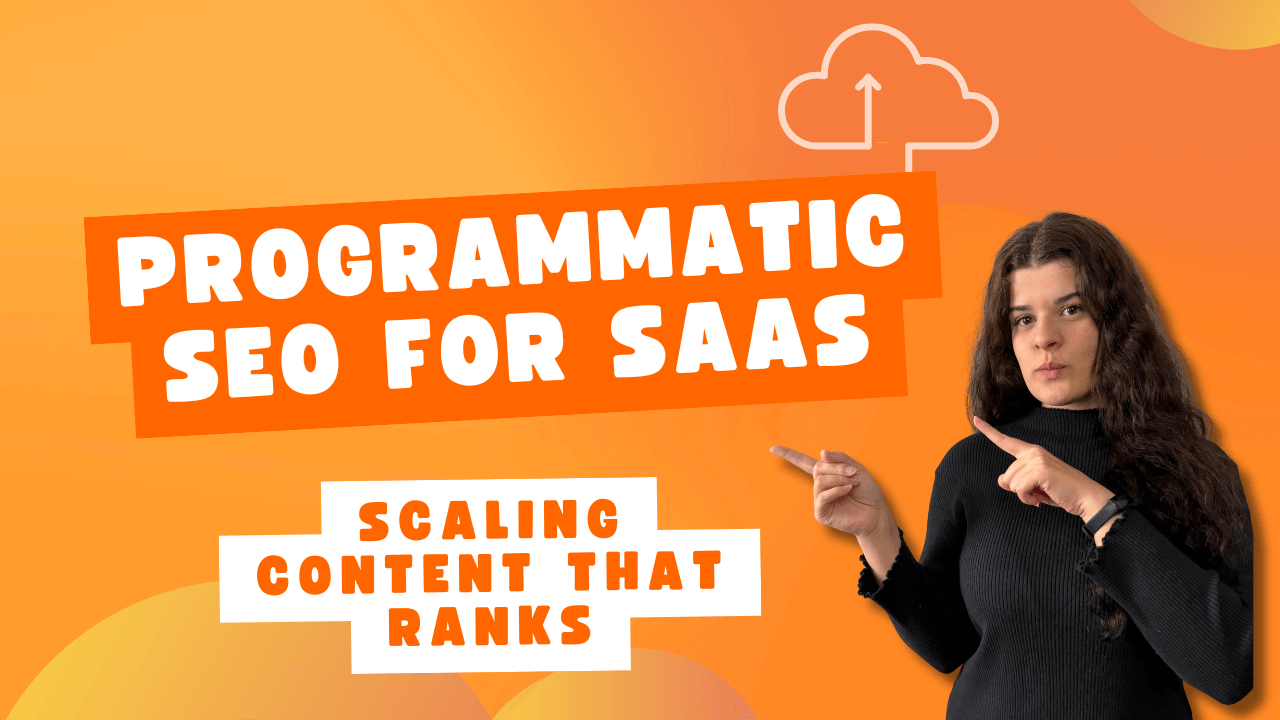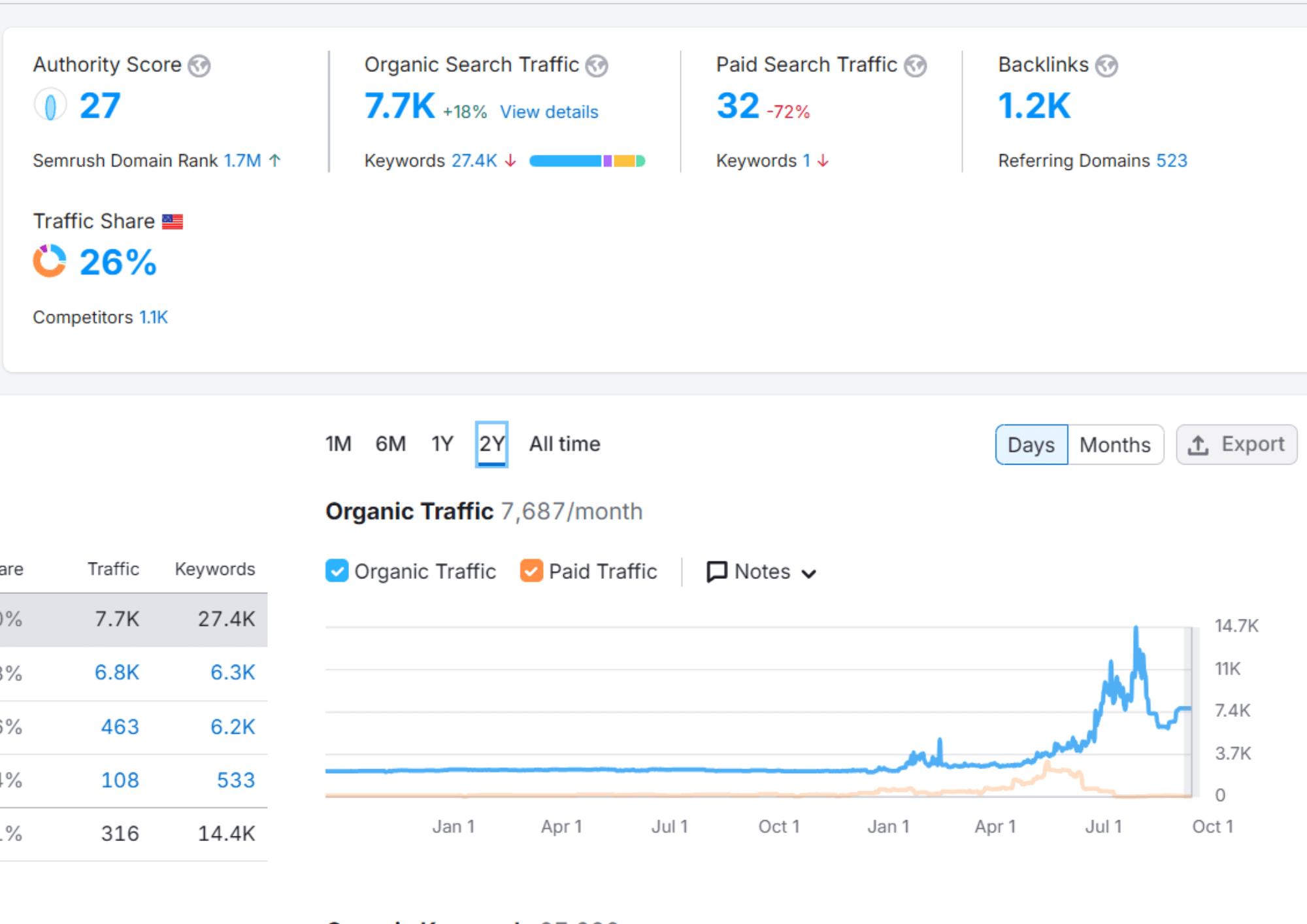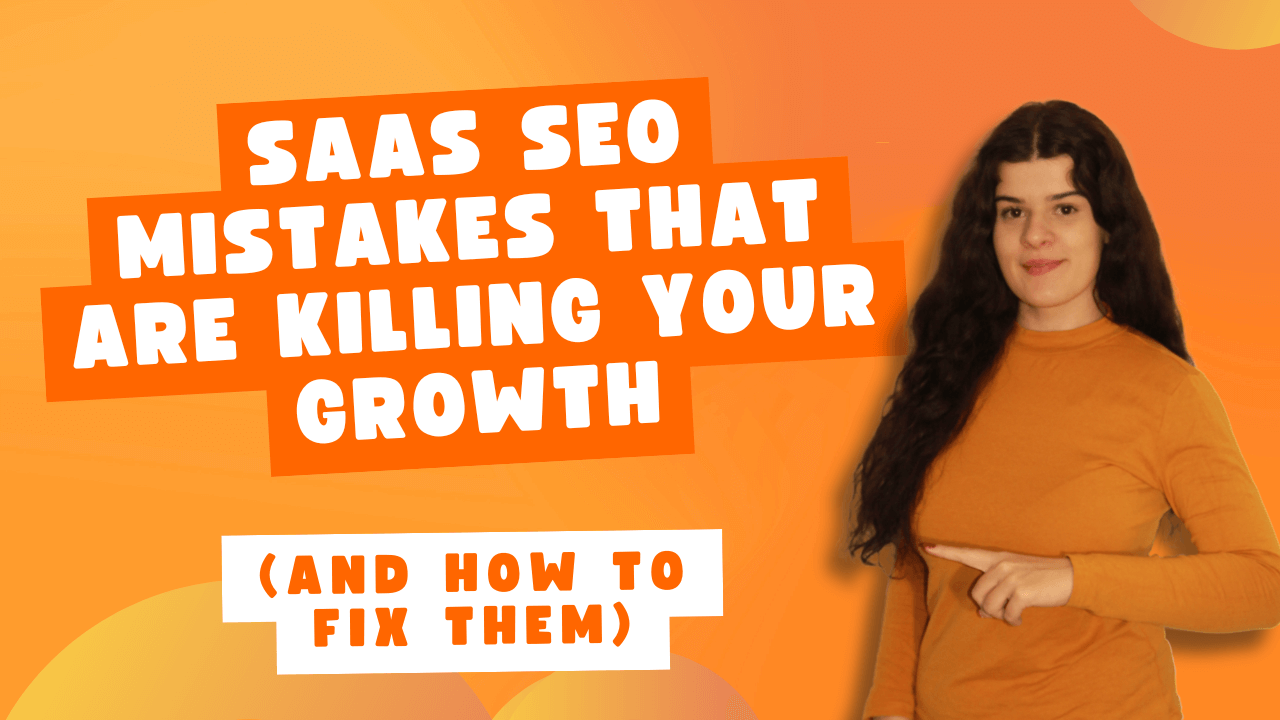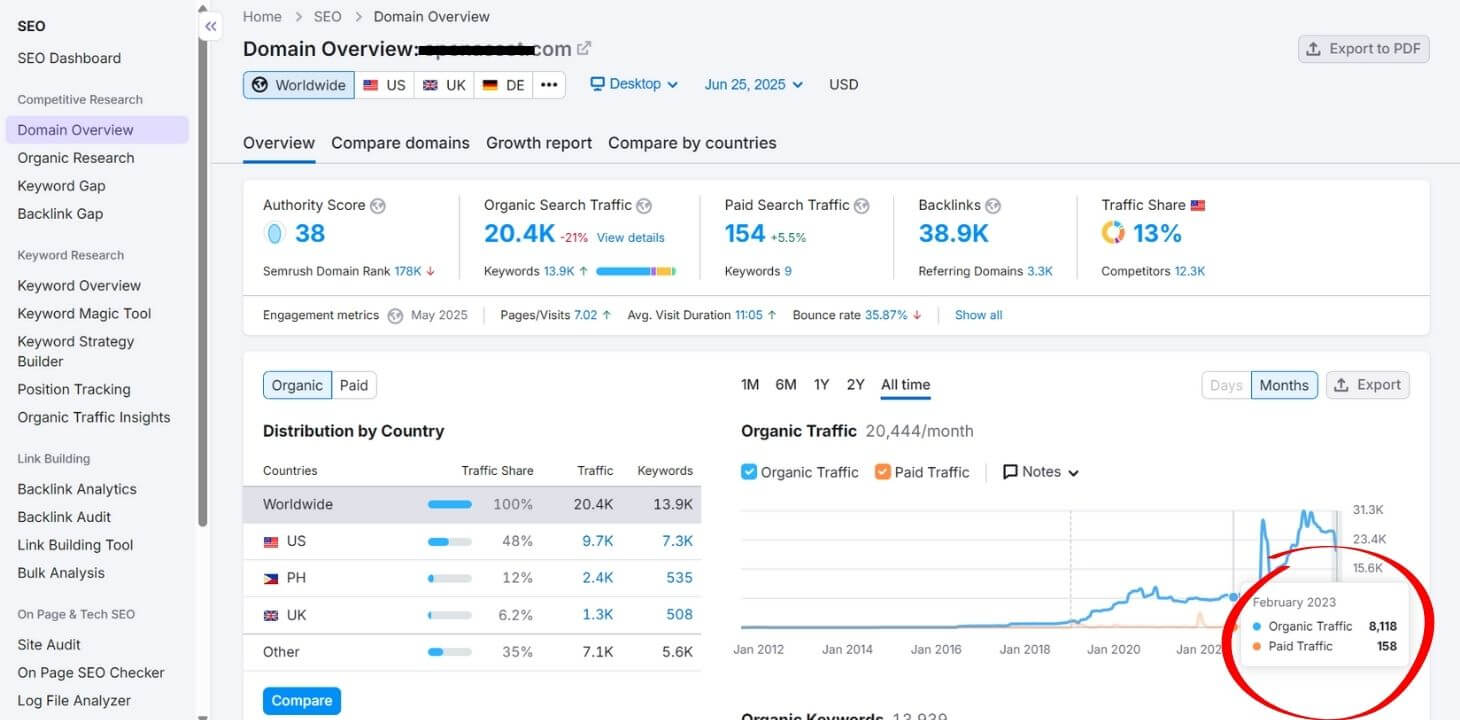You’re staring at your SaaS dashboard, watching your competitors climb the search rankings while your organic traffic remains stubbornly flat.
Your product is excellent, your team is talented, but something’s missing from your SEO strategy. What you need is a specialized audit SEO SaaS approach that understands the unique challenges of software-as-a-service businesses.
The truth is, most SaaS companies are making critical mistakes that traditional SEO audits simply can’t catch. While your competitors are securing million-dollar valuations through strategic organic growth, you might be missing opportunities that could transform your business overnight.
We’ll explain why SaaS SEO is fundamentally different, and show you the importance of implementing advanced strategies that have helped companies like Monday.com and Typeform achieve explosive growth.
Table of Contents
Why Traditional SEO Audits Fall Short for SaaS Companies
Let me tell you about Sarah, a marketing director at a growing project management SaaS. She hired what seemed like a competent SEO agency to audit their website. The agency delivered a 50-page report filled with generic recommendations: “fix meta descriptions,” “optimize images,” “improve page speed.” Three months and $15,000 later, her organic traffic had barely budged.
The problem is that traditional SEO audits treat SaaS platforms like regular websites, missing the fundamental differences that make or break organic growth in the software industry.
When you’re running an SEO audit for SaaS, you’re not just dealing with static web pages. You’re working with complex JavaScript applications, user authentication systems, dynamic content generation, and conversion funnels that span multiple touchpoints. Your success is measured by qualified demos, trial signups, and ultimately, recurring revenue growth.
This is why so many SaaS companies struggle with SEO. They’re using the wrong playbook entirely.
The SaaS SEO Reality Check
Modern SaaS platforms present unique challenges that require specialized audit approaches:
JavaScript-Heavy Applications: Most SaaS platforms rely on frameworks like React, Vue, or Angular. This means critical content often loads dynamically through AJAX calls, making it invisible to search crawlers if not properly optimized.
Authentication Barriers: Your most valuable content might be locked behind login walls. While security is crucial, you need strategies that make public content discoverable without compromising user data.
Complex User Journeys: Unlike e-commerce sites with simple purchase paths, SaaS customers often take months to convert. Your SEO needs to support lengthy nurturing cycles with content that addresses different stages of the buyer’s journey.
Single-Page Application Challenges: SPAs create dynamic URL generation and client-side routing complications that traditional audits miss entirely.
The Four-Pillar SaaS SEO Audit Framework
After analyzing hundreds of successful SaaS SEO strategies, I’ve identified four critical pillars that separate high-performing companies from the rest. When you conduct an SEO audit for SaaS using this framework, you’re addressing the specific challenges that actually impact software business growth.
Pillar 1: Crawlability
Think of crawlability as the foundation of your digital house. If search engines can’t find and navigate your content, nothing else matters.
Your audit should verify that search engines can discover all important pages within three clicks from your homepage. This sounds simple, but SaaS sites often bury crucial product information, case studies, and educational content in complex navigation structures.
The key is creating logical URL hierarchies that mirror how customers think about your solution. Instead of technical jargon-filled paths like “/platform/modules/reporting-analytics“, use clear structures like “/features/analytics-reports” that both users and search engines understand.
Pillar 2: Rendering
Your SaaS platform might look perfect to human visitors, but search engines might see completely different content – or worse, no content at all.
During your audit SEO SaaS process, you need to test how search engines actually render your JavaScript-heavy pages. Use tools like Google’s Rich Results Test to see exactly what crawlers see when they visit your site. Often, you’ll discover that critical product descriptions, customer testimonials, or pricing information simply doesn’t exist in the crawled version of your pages.
Here’s what proper meta implementation looks like for a SaaS platform:

The solution involves implementing server-side rendering or pre-rendering technologies that ensure your most important content appears in the initial HTML response, before any JavaScript executes.
Pillar 3: Strategic Indexing
Not all pages should be indexed, and knowing which ones to include or exclude can dramatically impact your organic performance. SaaS platforms generate countless URLs through user dashboards, filtered views, and dynamic content that can dilute your search authority if not properly managed.
Your audit should identify and address duplicate content issues, implement strategic canonical tags, and ensure that search engines focus on your most valuable pages rather than getting lost in infinite pagination or user-generated URLs.
Pillar 4: Performance and User Experience
In 2025, user experience is the ranking factor. Your audit SEO SaaS process must prioritize Core Web Vitals optimization, ensuring your Largest Contentful Paint stays under 2.5 seconds, First Input Delay remains below 100 milliseconds, and Cumulative Layout Shift stays under 0.1.
This becomes especially challenging for SaaS platforms that need to balance rich functionality with fast loading times. The key is optimizing for above-the-fold content while lazy-loading non-critical elements.
Step-by-Step SaaS SEO Audit Process
Now that you understand the framework, let’s take a look at the practical implementation. This process has been refined through hundreds of audits and consistently delivers measurable results for SaaS companies of all sizes.
Here’s your audit SEO SaaS checklist broken down by priority and impact:
Complete SaaS SEO Audit Checklist
Priority-based task breakdown with time estimates
| Audit Phase | Task | Priority | Time Required | Business Impact |
|---|---|---|---|---|
| Week 1: Foundation | ||||
| Stakeholder interviews | High | 8 hours | Strategic alignment | |
| Tool setup & access | High | 4 hours | Data collection | |
| Competitor identification | Medium | 3 hours | Market understanding | |
| Days 8-10: Baseline | ||||
| Traffic analysis | High | 6 hours | Performance benchmark | |
| Keyword ranking audit | High | 4 hours | Opportunity identification | |
| Backlink profile review | Medium | 3 hours | Authority assessment | |
| Days 11-17: Technical | ||||
| JavaScript rendering test | Critical | 8 hours | Visibility foundation | |
| Core Web Vitals analysis | Critical | 6 hours | User experience | |
| Mobile responsiveness | High | 4 hours | Search ranking factor | |
| Schema markup audit | Medium | 5 hours | Rich results eligibility | |
| Days 18-25: Content | ||||
| On-page optimization | High | 10 hours | Conversion improvement | |
| Content gap analysis | High | 6 hours | Traffic opportunity | |
| Internal linking audit | Medium | 4 hours | Authority distribution | |
| Days 26-30: Competitive | ||||
| Backlink gap analysis | High | 5 hours | Link building targets | |
| Content strategy review | High | 7 hours | Content roadmap | |
📈 Total Estimated Time: 89 Hours | Expected ROI Timeline: 3-6 Months
Week 1: Foundation and Discovery
Before going into technical analysis, spend time understanding your business context. Schedule interviews with your marketing, development, product, and sales teams. You need to understand your primary SEO objectives, technical constraints, customer pain points, and competitors.
This discovery phase prevents the common mistake of optimizing for vanity metrics instead of business outcomes. When you understand that your sales team struggles to book demos with certain customer segments, you can prioritize SEO opportunities that address those specific challenges.
Set up your audit tools during this phase: verify Google Search Console across all subdomains, ensure proper Google Analytics goal configuration, and establish access to essential tools like Ahrefs, SEMrush, or Screaming Frog.
Days 8-10: Baseline Performance Analysis
Establish clear benchmarks before making any changes. Document your current organic traffic patterns, keyword rankings and visibility scores, backlink profile health, and technical performance metrics.
This baseline becomes crucial for measuring ROI later. Many SaaS companies skip this step and struggle to prove the value of their SEO investments when results start improving.
Days 11-17: Technical Infrastructure
This is where your approach differs most dramatically from traditional website audits. You’re not just checking for broken links and missing alt tags – you’re analyzing complex technical systems that power modern software applications.
Start with crawlability assessment. Use Screaming Frog or similar tools to crawl your entire site, paying special attention to how well your internal linking distributes authority to important pages. Verify that your XML sitemap accurately reflects your site structure and that your robots.txt file isn’t accidentally blocking important content.
Next, conduct thorough JavaScript and rendering analysis. This step is really important for SaaS platforms. Test how your pages render with and without JavaScript enabled. Use Google’s Rich Results Test to see exactly what search engines see when they crawl your pages. Often, you’ll discover that dynamic content loaded through API calls remains invisible to search crawlers.
Analyze your Core Web Vitals performance using Google PageSpeed Insights and real user data from Search Console. SaaS platforms often struggle with performance due to complex functionality, but this can be addressed through strategic optimization without sacrificing user experience.
Days 18-25: Content and Conversion Optimization
Review every customer-facing page through an SEO lens. This includes your homepage, product pages, pricing information, case studies, and educational content. Each page should target specific keywords that align with customer search behavior while supporting your conversion goals.
Here’s how to implement proper schema markup for your SaaS platform:
html
<!-- Software Application Schema for your main product page -->
<script type="application/ld+json">
{
"@context": "https://schema.org",
"@type": "SoftwareApplication",
"name": "YourSaaS Project Management Platform",
"applicationCategory": "BusinessApplication",
"operatingSystem": "Web Browser",
"offers": {
"@type": "Offer",
"price": "29.00",
"priceCurrency": "USD",
"priceValidUntil": "2025-12-31"
},
"aggregateRating": {
"@type": "AggregateRating",
"ratingValue": "4.8",
"reviewCount": "1247"
},
"featureList": [
"Task Management",
"Team Collaboration",
"Progress Tracking",
"Time Management"
]
}
</script>
<!-- FAQ Schema for your support/help pages -->
<script type="application/ld+json">
{
"@context": "https://schema.org",
"@type": "FAQPage",
"mainEntity": [
{
"@type": "Question",
"name": "How does the free trial work?",
"acceptedAnswer": {
"@type": "Answer",
"text": "Our 14-day free trial gives you full access to all features with no credit card required. You can invite unlimited team members and create unlimited projects."
}
},
{
"@type": "Question",
"name": "Can I cancel anytime?",
"acceptedAnswer": {
"@type": "Answer",
"text": "Yes, you can cancel your subscription at any time. There are no long-term contracts or cancellation fees."
}
}
]
}
</script>Pay special attention to your SaaS-specific content types. Product feature pages should address customer problems. Pricing pages should be optimized for commercial intent keywords. Your knowledge base and documentation should capture long-tail educational searches that nurture prospects through lengthy decision cycles.
Days 26-30: Competitive Intelligence and Link Analysis
Understand how your competitors are winning organic traffic and identify opportunities they’re missing. Analyze their technical implementation, content strategies, and backlink profiles to uncover gaps in your own approach.
This competitive analysis often reveals quick wins. Perhaps competitors are ignoring certain customer segments or failing to optimize for specific product categories. These gaps can uncover immediate opportunities for organic growth.
Advanced SaaS SEO Audit Techniques for 2025
As we all know SEO is rapidly changing, and SaaS companies need to stay ahead of trends to maintain competitive advantages.
Here are the advanced strategies that separate industry leaders from followers.
AI-Powered SEO Optimization
Artificial intelligence is revolutionizing how we approach SEO audits. AI Overviews now appear in nearly half of all searches, fundamentally changing how users discover and interact with content. Your audit process needs to account for these changes.
Instead of optimizing purely for keyword density, focus on creating content that AI systems can understand and cite. This means providing clear, authoritative answers to specific customer questions while demonstrating expertise through detailed explanations and real-world examples.
AI-powered tools can now analyze your content against successful competitors, identify semantic keyword opportunities, and even suggest content improvements that align with search engine preferences. Companies using these advanced techniques report significantly higher click-through rates and improved organic visibility.
Automation and Monitoring Systems
Manual SEO monitoring becomes impossible at scale. Successful SaaS companies implement automated systems that continuously monitor site health, track ranking changes, and alert teams to critical issues before they impact performance.
Modern automation tools can generate and submit XML sitemaps automatically, detect broken links in real-time, and even implement basic technical fixes without human intervention. This frees your team to focus on strategic initiatives while ensuring your technical foundation remains solid.
Community-Driven SEO Strategies
The rise of platforms like Reddit and LinkedIn in search results creates a massive opportunity for SaaS companies. Your audit should identify opportunities to participate in relevant community discussions, contribute valuable insights, and build authority within your industry ecosystem.
This isn’t about spam or manipulation as this will get you banned on Reddit, alongside other pages and groups. Rather, you should be genuinely contributing value to communities where your ideal customers seek advice and solutions.
When done authentically, community participation can drive both referral traffic and valuable backlinks that improve your overall SEO performance.
Measuring SaaS SEO Audit Success
Traditional SEO metrics like traffic and rankings tell only part of the story for SaaS businesses. Your SEO SaaS efforts should ultimately drive business growth, not just vanity metrics.
Revenue-Focused Key Performance Indicators
Here’s how to track what actually matters for your SaaS business:
SaaS SEO Success Metrics & KPIs
Revenue-focused tracking with target benchmarks
| Metric Category | Key Metrics | Target Benchmarks | Tracking Frequency |
|---|---|---|---|
| Revenue Metrics | |||
| MRR from organic | 15-25% of total MRR | Monthly | |
| ARR growth attribution | 20-30% yearly | Quarterly | |
| Customer LTV (organic) | 3-5x higher than paid | Monthly | |
| Acquisition Metrics | |||
| Organic CAC | 50-70% lower than paid | Monthly | |
| CAC payback period | <12 months | Monthly | |
| Trial-to-paid conversion | 15-25% for organic | Weekly | |
| Engagement Metrics | |||
| Demo request rate | 2-5% of organic traffic | Weekly | |
| Free trial signups | 8-12% of organic traffic | Daily | |
| Content engagement | 3-4 min avg. session | Weekly | |
| Technical Metrics | |||
| Core Web Vitals | LCP <2.5s, CLS <0.1 | Daily | |
| Mobile usability | 100% mobile-friendly | Weekly | |
| Crawl error rate | <1% of total pages | Weekly | |
Track what matters. Focus on revenue metrics first, then optimize engagement and technical performance
Track Monthly Recurring Revenue (MRR) and Annual Recurring Revenue (ARR) attributed to organic search traffic. This requires proper attribution modeling but provides the clearest picture of SEO ROI for SaaS businesses.
Here’s how to implement proper Google Analytics 4 tracking for SaaS conversions:
html
<!-- Google Analytics 4 Enhanced Ecommerce for SaaS -->
<script>
// Track trial signup conversion
gtag('event', 'sign_up', {
method: 'email',
value: 29.00, // Monthly plan value
currency: 'USD',
user_id: 'user_123',
subscription_type: 'free_trial'
});
// Track demo request
gtag('event', 'generate_lead', {
value: 150.00, // Estimated lead value
currency: 'USD',
lead_type: 'demo_request',
source: 'organic_search'
});
// Track subscription conversion
gtag('event', 'purchase', {
transaction_id: 'txn_456789',
value: 29.00,
currency: 'USD',
items: [{
item_id: 'saas_monthly_plan',
item_name: 'Monthly Subscription',
item_category: 'subscription',
quantity: 1,
price: 29.00
}]
});
</script>Monitor Customer Acquisition Cost (CAC) for organic channels compared to paid advertising. Organic traffic typically delivers lower CAC with higher customer lifetime value, making it incredibly valuable for sustainable growth.
Measure conversion rates at each stage of your funnel. Track how organic traffic converts to email subscribers, free trial signups, demo requests, and ultimately paying customers. This granular analysis helps optimize your entire customer journey, not just individual pages.
Advanced Attribution Modeling
SaaS customers rarely convert immediately, making attribution complex but crucial. Implement multi-touch attribution that credits SEO throughout the customer journey, from initial awareness through final conversion.
Use tools like Google Analytics 4 with enhanced e-commerce tracking to understand how organic content contributes to conversions that might occur weeks or months after initial discovery. This long-term view is essential for understanding true SEO ROI in SaaS businesses.
Common SaaS SEO Audit Pitfalls and How to Avoid Them
Learning from others’ mistakes can save you months of frustration and thousands of dollars. Here are the most common pitfalls I see during our audits for SaaS projects, and how to avoid them.
The JavaScript Blindness Trap
Many auditors still approach SaaS sites like static websites, missing critical issues with JavaScript rendering and dynamic content. They deliver recommendations that address surface-level problems while ignoring fundamental technical barriers to organic growth.
Always test your pages with JavaScript disabled to understand what search engines actually see. Here’s a simple test you can implement:
html
<!-- Create a fallback version for search engines -->
<noscript>
<div class="seo-content">
<h1>Project Management Software for Growing Teams</h1>
<p>Streamline your workflow with our intuitive project management platform.
Features include task tracking, team collaboration, and progress reporting.</p>
<div class="features-list">
<h2>Key Features</h2>
<ul>
<li>Unlimited projects and tasks</li>
<li>Real-time team collaboration</li>
<li>Advanced reporting and analytics</li>
<li>Integration with 50+ tools</li>
</ul>
</div>
</div>
</noscript>
<!-- Progressive enhancement for JavaScript users -->
<div id="dynamic-content">
<!-- This content loads via JavaScript -->
</div>
<script>
// Ensure critical content is available immediately
document.addEventListener('DOMContentLoaded', function() {
// Load dynamic content while keeping critical info visible
const criticalContent = {
title: "Project Management Software for Growing Teams",
description: "Streamline your workflow with our intuitive project management platform.",
features: ["Unlimited projects", "Team collaboration", "Advanced reporting"]
};
// Render content that search engines can see
renderCriticalContent(criticalContent);
});
</script>Use specialized crawling tools that can render JavaScript content, and verify that your most important messaging appears in the initial HTML response.
The Feature-First Mistake
SaaS companies often optimize for features instead of customer problems. They target keywords like “project management dashboard” when customers search for “how to keep track of team deadlines.”
Remember that customers buy solutions to problems, not features. Your content should address pain points first, then position your features as solutions. This customer-centric approach drives higher-quality traffic that converts at better rates.
Ignoring the Conversion Funnel
Traditional SEO focuses on driving traffic to individual pages. SaaS SEO requires thinking about entire customer journeys and optimizing for progression through conversion funnels.
Map your organic traffic flow from initial discovery through conversion. Identify where prospects drop off and create targeted content that addresses concerns at each stage. This holistic approach dramatically improves organic ROI.
Underestimating Implementation Complexity
SaaS platforms often require complex technical implementations that generic SEO recommendations don’t address. Simply saying “implement schema markup” doesn’t help when you’re dealing with dynamic content generation and user authentication systems.
Work with development teams to understand technical constraints and create realistic implementation timelines. Prioritize changes based on business impact and technical feasibility, not just SEO best practices.
Tools and Resources for SaaS SEO Audits
The right tools can make the difference between a superficial audit and actionable insights that drive real growth. Here’s my recommended toolkit for a comprehensive SEO audit for SaaS projects.
Essential Premium Tools
Here’s a practical comparison of the top tools for your audit SEO SaaS project:
Essential SaaS SEO Audit Tools
Compare features, pricing, and ROI for your audit toolkit
| Tool | Price Range | Best For | SaaS-Specific Features | ROI Timeline |
|---|---|---|---|---|
| Screaming Frog | $259/year | Technical depth | JavaScript rendering, complex crawling | 1-2 weeks |
| Ahrefs | $129-499/month | Competitive analysis | Site audit, backlink gap analysis | 1 month |
| SEMrush | $139-499/month | All-in-one solution | AI recommendations, technical issues | 2-4 weeks |
| SE Ranking | $65-259/month | Agency management | Client grouping, white-label reports | 1 month |
| SEOptimer | $29-39/month | Budget-friendly | Embeddable audits, API access | 2-3 weeks |
Pro Tip: Start with Screaming Frog for technical audits, then add Ahrefs or SEMrush for competitive analysis
Screaming Frog SEO Spider provides the deepest technical analysis for complex SaaS sites. Its ability to crawl JavaScript-heavy sites and identify intricate technical issues makes it invaluable for thorough audits. The annual cost of $259 pays for itself with the first major issue it helps you identify and resolve. But you can also use the free version which allows you to crawl up to 500 pages.
Ahrefs excels at competitive analysis and backlink research, crucial for understanding your competitive landscape and identifying link building opportunities. Their Site Audit tool specifically helps with technical SEO issues common in SaaS platforms.
SEMrush offers comprehensive site auditing with AI-powered recommendations specifically valuable for SaaS companies. Their ability to track competitors and identify content gaps makes it worth the investment for growing SaaS businesses.
Free Essential Resources
Never underestimate the power of free tools from Google. Search Console provides invaluable insights into how Google actually perceives your site, while Google Analytics 4 offers sophisticated attribution modeling crucial for understanding SEO ROI.
Google’s Rich Results Test and PageSpeed Insights provide immediate feedback on technical implementation and performance optimization opportunities.
Industry-Specific SaaS SEO Considerations
Not all SaaS companies face the same SEO challenges. Understanding your specific market dynamics helps prioritize audit efforts and resources for maximum impact.
B2B vs. B2C SaaS Differences
B2B SaaS companies typically deal with longer sales cycles, multiple decision makers, and higher customer values. Your audit SEO SaaS approach should prioritize educational content that nurtures prospects over months of evaluation.
B2C SaaS platforms often benefit from more direct, conversion-focused SEO strategies. Users make faster decisions, so your audit should emphasize immediate conversion optimization and mobile experience.
Vertical SaaS Special Requirements
Industry-specific SaaS platforms face unique compliance and audience considerations. Healthcare SaaS companies must address HIPAA compliance in their content, while financial services platforms need to demonstrate security and regulatory adherence.
Legal and educational SaaS platforms serve highly specialized audiences with specific terminology and search behaviors. Your audit should account for these industry nuances rather than applying generic optimization strategies.
Building Your SaaS SEO Audit Action Plan
Knowledge without action leads nowhere. Here’s how to transform audit insights into measurable business growth.
Prioritization Framework
Not all SEO improvements deliver equal business impact. Use a scoring system that weighs potential traffic impact, conversion likelihood, and implementation difficulty to prioritize your optimization efforts.
Quick wins that require minimal development resources but deliver immediate traffic improvements should take priority. These early successes build momentum and internal support for larger initiatives.
Implementation Timeline
Plan realistic timelines that account for development resources and business priorities. Most technical SEO improvements require development team collaboration, so integrate SEO initiatives into regular sprint planning processes.
Here’s a realistic timeline and cost breakdown for SaaS SEO audit implementation:
SaaS SEO Implementation Timeline & Costs
Realistic budgeting and ROI expectations for your project
| Implementation Phase | Duration | Internal Cost* | Agency Cost** | Expected ROI Timeline |
|---|---|---|---|---|
| Basic Technical Fixes | 2-4 weeks | $2,000-5,000 | $3,000-8,000 | 1-2 months |
| Content Optimization | 4-6 weeks | $5,000-10,000 | $8,000-15,000 | 2-4 months |
| Advanced Implementation | 8-12 weeks | $15,000-25,000 | $20,000-40,000 | 4-8 months |
| Comprehensive Overhaul | 3-6 months | $25,000-50,000 | $40,000-100,000 | 6-12 months |
*Based on average developer and marketing team hourly rates
**Based on agency pricing for similar scope projects
Expect meaningful results from audit implementations within 6-12 months. This timeframe allows for proper implementation, search engine processing, and organic growth accumulation.
Measuring and Reporting Progress
Establish regular reporting cycles that track both SEO metrics and business outcomes. Monthly reports should include organic traffic growth, keyword ranking improvements, and most importantly, conversions and revenue attribution.
Create dashboards that automatically pull data from multiple sources, making it easy to demonstrate ongoing SEO value to stakeholders and justify continued investment in optimization efforts.
Let’s Audit Your SaaS Website
The organic search opportunity for SaaS companies has never been greater. While your competitors struggle with generic SEO approaches, you now have the knowledge and framework to build sustainable competitive advantages through strategic organic growth.
If you don’t know how to properly audit your website, SEO Curly can do it for you! We offer SaaS SEO strategies and technical SEO implementation for SaaS platforms. Alongside with that, if you send us an email and ask for a “FREE SEO AUDIT”, we will do a mini SEO audit for free!
Let’s improve your SaaS website together and get you more leads with the proper strategy.

